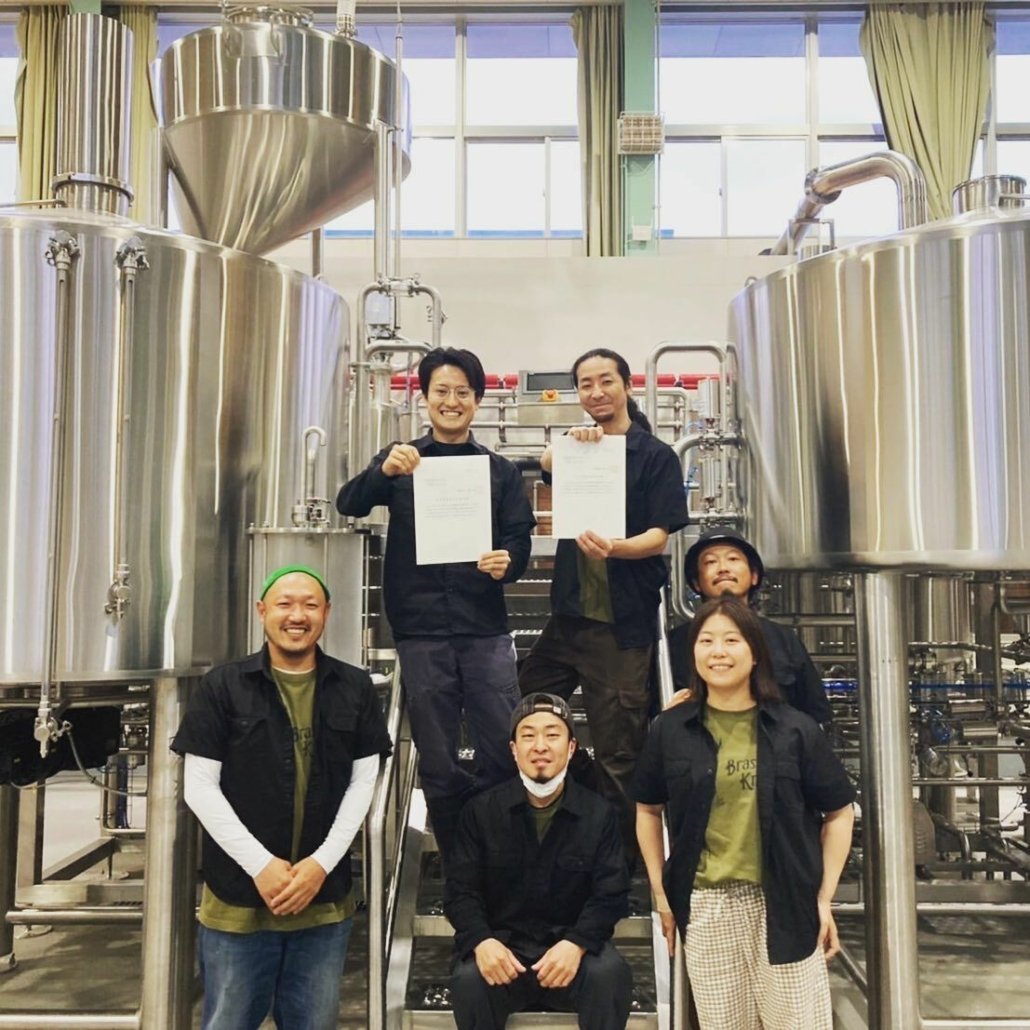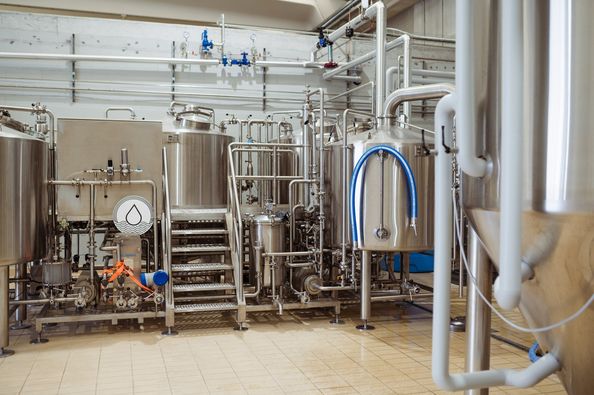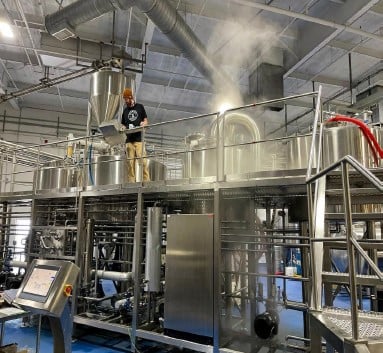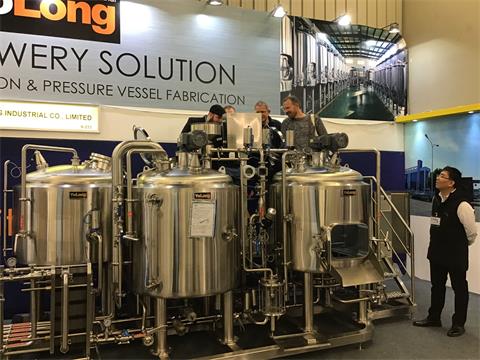9 Essential Brewhouse Equipment for Brewing Exceptional Beer
Introduction
In this article, we will explore the world of brewhouse equipment and its importance in the beer brewing process. Brewhouse equipment plays a crucial role in ensuring the quality, efficiency, and consistency of the brewing process. We will delve into the various types of brewhouse equipment, key considerations when choosing them, common features and accessories, as well as the benefits of investing in high-quality equipment. Additionally, we will discuss the maintenance and care required to prolong the lifespan of brewhouse equipment. So let’s raise our glasses and dive into the world of brewhouse equipment.
What is Brewhouse Equipment?
Before we dive into the intricacies of brewhouse equipment, let’s first understand what it entails. Brewhouse equipment refers to the set of machinery and vessels used in the beer brewing process. It includes equipment like mash tuns, brew kettles, fermenters, and more. These components work together to convert raw ingredients into the wort, which is then fermented to produce beer. The quality and functionality of brewhouse equipment have a significant impact on the overall brewing process and the final product.

Types of Brewhouse Equipment
Mash Tun
The mash tun is a crucial component of the brewhouse equipment. It is responsible for the mashing process, where the grains are mixed with hot water to extract sugars and other soluble components. The mash tun provides an ideal environment for enzymatic activity, converting starches into fermentable sugars. It typically features a false bottom or a perforated plate to separate the liquid wort from the spent grains.
Brew Kettle
The brew kettle, also known as the boiling kettle, is where the wort is boiled and hops are added for flavor, aroma, and bitterness. It is equipped with heating elements or steam jackets to achieve and maintain the desired temperature. The brew kettle also includes features like whirlpool ports and tangential inlets to aid in the separation of trub and hop particles.
Hot Liquor Tank
The hot liquor tank (HLT) holds hot water that is used for various purposes during the brewing process. It provides hot water for mashing, sparging, and cleaning. The HLT is typically equipped with temperature control systems and heating elements to ensure consistent and precise water temperatures.
Wort Chiller
The wort chiller is responsible for rapidly cooling the boiled wort to the desired fermentation temperature. It is crucial to cool the wort quickly to prevent unwanted microbial growth. There are various types of wort chillers, including immersion chillers, plate heat exchangers, and counterflow chillers, each offering different cooling efficiencies and methods.
Fermenters
Fermenters are vessels where the cooled wort is transferred for fermentation. They provide a controlled environment for yeast to convert sugars into alcohol and produce carbon dioxide. Fermenters come in various sizes and configurations, ranging from traditional open-top fermenters to modern conical fermenters, which offer better yeast sedimentation and ease of collection.
Bright Tank
The bright tank is the final vessel in the brewing process before packaging. It is used for conditioning, carbonating, and clarifying the beer. Bright tanks are often equipped with pressure and temperature control systems to achieve optimal carbonation levels and maintain beer freshness.
CIP System
The CIP (Clean-In-Place) system is an integral part of brewhouse equipment. It allows for efficient and automated cleaning and sanitization of brewing vessels and piping systems. The CIP system saves time and ensures proper hygiene, reducing the risk of contamination and off-flavors in the beer.

Key Considerations when Choosing Brewhouse Equipment
Choosing the right brewhouse equipment is crucial for breweries of all sizes. Several key considerations should be taken into account during the selection process.
Brewery Size and Production Capacity
The size of your brewery and desired production capacity will determine the scale of brewhouse equipment needed. Whether you are a small craft brewery or a large-scale production facility, the equipment should align with your brewing goals and output requirements.
Budget and Cost Efficiency
Budget considerations play a significant role in equipment selection. It’s essential to strike a balance between upfront investment and long-term cost efficiency. While it may be tempting to opt for cheaper options, investing in high-quality equipment can lead to long-term savings through improved performance and durability.
Quality and Durability
The quality and durability of brewhouse equipment are paramount. Brewing is a demanding process, and equipment should be able to withstand the rigors of repeated use and cleaning. Choosing reputable manufacturers and suppliers known for their quality craftsmanship is essential.
Brewing Process and Efficiency
Efficiency in the brewing process can save time, energy, and resources. Consider equipment features that promote efficiency, such as automated controls, heat recovery systems, and precise temperature and flow rate regulation.
Customization Options
Every brewery has unique requirements and processes. Look for equipment manufacturers that offer customization options to tailor the brewhouse equipment to your specific needs. This can include modifications to vessel sizes, control systems, and additional accessories.

Common Features and Accessories of Brewhouse Equipment
Brewhouse equipment often incorporates several common features and accessories to enhance functionality, efficiency, and safety.
Control Systems
Control systems are essential for maintaining precise and consistent process parameters such as temperature, pressure, and flow rate. Modern brewhouse equipment is equipped with advanced control systems that allow brewers to monitor and adjust these parameters with ease, ensuring optimal brewing conditions and quality.
Heating and Cooling Options
Brewhouse equipment may offer various heating and cooling options to meet the specific needs of the brewing process. This can include electric heating elements, steam jackets, or direct-fire burners for heating, as well as glycol jackets or recirculation systems for cooling. Having flexible heating and cooling options enables brewers to have better control over the temperature at each stage of the brewing process.
Safety Features
Safety is of utmost importance in any brewing operation. Brewhouse equipment is designed with safety features such as pressure relief valves, emergency shut-off switches, and alarm systems to ensure a safe working environment for brewers and minimize the risk of accidents or equipment damage.
Cleaning and Maintenance
Efficient cleaning and maintenance processes are vital to keep brewhouse equipment in optimal condition. Many equipment manufacturers provide features such as easy access to internal components, removable fittings, and automated cleaning systems to streamline the cleaning and maintenance tasks, saving time and effort for brewers.
Automation and Integration
Automation plays a significant role in modern brewhouse equipment. Automated processes, such as mash temperature control, wort transfer, and CIP cycles, improve efficiency, reduce human error, and allow brewers to focus on other critical tasks. Integration capabilities with brewing software and data logging systems enable brewers to gather and analyze brewing data for process optimization and quality control.

Benefits of Investing in High-Quality Brewhouse Equipment
Investing in high-quality brewhouse equipment offers numerous benefits for breweries, regardless of their size or production volume.
Consistent Brewing Results
High-quality equipment ensures consistent brewing results from batch to batch. Precise temperature control, efficient heating and cooling mechanisms, and accurate process parameters contribute to consistent flavors, aromas, and quality in the final beer product.
Time and Labor Savings
Efficient brewhouse equipment saves time and labor throughout the brewing process. Automated controls, streamlined workflows, and optimized cleaning systems reduce manual intervention and repetitive tasks, allowing brewers to focus on creativity, recipe development, and quality assurance.
Improved Efficiency and Productivity
Well-designed brewhouse equipment improves overall brewing efficiency and productivity. Features like heat recovery systems, automated mash-in and lautering, and advanced wort chilling methods help optimize energy usage, shorten brewing cycles, and increase the number of batches produced within a given timeframe.
Enhanced Beer Quality
Investing in high-quality equipment directly contributes to the overall quality of the beer produced. Precise temperature control during mashing and fermentation, efficient boiling and hop utilization, and effective yeast management systems all result in beers with better clarity, flavor, and stability.
Scalability and Growth Opportunities
High-quality brewhouse equipment provides scalability and growth opportunities for breweries. As production demands increase, equipment with larger capacities or modular designs allows for expansion without significant disruptions to existing operations. The ability to upgrade or add additional vessels and accessories ensures that the brewhouse can adapt to changing market demands and business growth.
Maintenance and Care of Brewhouse Equipment
Proper maintenance and care are essential for extending the lifespan of brewhouse equipment and maximizing its performance. Here are some key considerations for maintaining brewhouse equipment:
Regular Cleaning and Sanitization
Regular and thorough cleaning and sanitization are crucial to prevent microbial contamination and off-flavors in the beer. Establish a cleaning schedule and follow industry best practices for cleaning agents, procedures, and CIP systems to ensure optimal cleanliness and hygiene.
Preventive Maintenance
Implement a preventive maintenance program for brewhouse equipment. This includes routine inspections, lubrication of moving parts, calibration of sensors, and proactive replacement of worn-out components. Regular maintenance helps identify and address potential issues before they become major problems, reducing downtime and costly repairs.
Troubleshooting and Repairs
Inevitably, brewhouse equipment may encounter issues or breakdowns. Develop troubleshooting protocols and have spare parts readily available to minimize downtime. In cases where repairs are needed, consult with equipment manufacturers or qualified technicians to ensure proper and timely resolution.
Equipment Upgrades and Modifications
As technology advances and brewing processes evolve, consider equipment upgrades and modifications to stay competitive and enhance brewing capabilities. Upgrading control systems, integrating automation features, or retrofitting vessels with additional functionalities can improve efficiency, productivity, and quality.

Conclusion
Brewhouse equipment plays a crucial role in the brewing process, impacting the quality, consistency, and efficiency of beer production. Choosing the right equipment, considering key factors such as brewery size, budget, and customization options, is essential for success. High-quality equipment offers benefits like consistent brewing results, time and labor savings, improved efficiency and productivity, enhanced beer quality, and scalability for future growth. Proper maintenance, regular cleaning, and proactive care are vital to prolonging equipment lifespan and ensuring optimal performance. By investing in reliable brewhouse equipment and maintaining it properly, breweries can continue to craft exceptional beers and thrive in the competitive brewing industry.
FAQs
Q: Can brewhouse equipment be customized to fit specific brewery needs?
A: Yes, many equipment manufacturers offer customization options to tailor brewhouse equipment according to specific brewery requirements. This includes modifications to vessel sizes, control systems, and additional accessories.
Q: How often should brewhouse equipment be cleaned and sanitized?
A: Brewhouse equipment should be regularly cleaned and sanitized according to a predetermined schedule. The frequency depends on usage and the specific requirements of the brewing process.
Q: What are some common safety features in brewhouse equipment?
A: Common safety features in brewhouse equipment include pressure relief valves, emergency shut-off switches, alarm systems, and safety interlocks to ensure a safe working environment for brewers.
Q: How can brewhouse equipment improve brewing efficiency?
A: Brewhouse equipment can improve brewing efficiency through features like automated controls, heat recovery systems, optimized workflows, and precise temperature regulation, reducing energy consumption and shortening brewing cycles.
Q: What are the advantages of investing in high-quality brewhouse equipment?
A: Investing in high-quality brewhouse equipment leads to consistent brewing results, time and labor savings, improved efficiency and productivity, enhanced beer quality, and scalability for future growth opportunities.
Additional FAQs about Brewing Exceptional Beer with Brewhouse Equipment
- Q: Which single upgrade delivers the biggest quality gain for small brewhouses?
A: Jacketed, temperature-stable fermenters paired with closed-transfer hardware. Stable fermentation and low oxygen pickup consistently lift flavor stability more than most hot-side tweaks. - Q: How do I size a plate heat exchanger for consistent knockout temps?
A: As a rule of thumb, target 1.2–1.5× the heat load at your maximum cast-out flow. Account for summer groundwater temperatures and add a glycol assist stage if groundwater >18–20°C. - Q: What lauter tun features reduce stuck mashes?
A: Even rake coverage with ΔP (differential pressure) monitoring, a properly designed false bottom, and adjustable runoff flow. Mill to a balanced grist (husks intact, minimal flour) and preheat/sparge at 76–78°C. - Q: Do I need a dedicated bright tank if I use unitanks?
A: Unitanks can package directly, but a brite tank improves throughput, carbonation accuracy, and cellar flexibility. Many breweries keep at least one BBT for polishing and scheduling. - Q: What maintenance schedule protects my brewhouse pumps and seals?
A: Inspect seals and alignment monthly; verify CIP flow ≥1.5 m/s; replace worn gaskets quarterly; rebuild pumps annually or per hours run; document all work in a maintenance log.
2025 Industry Trends for Brewhouse Equipment
- Electrification and hybrid heating to navigate gas permitting and demand charges.
- Sensor-driven CIP endpoints (conductivity/time/flow) becoming standard to cut utilities.
- Inline DO monitoring at knockout and pre-package adopted for better shelf life.
- FAT-tested modular skids shorten commissioning; plug-and-play IO-Link devices simplify diagnostics.
- Data-first breweries: electronic batch records (EBR), traceable weld/material certificates, and QA dashboards.
2025 Benchmarks and Cost/Performance Signals
| Metric | Typical Target/Range | Why it Matters |
|---|---|---|
| Brewhouse efficiency (lauter) | 72–86% | Raw material yield and predictable gravity |
| Water-to-beer ratio | 3.2–4.5:1 | Utility savings with heat recovery and optimized CIP |
| Knockout DO | <0.10–0.30 ppm | Flavor stability and hop retention |
| Boil-off control variance | ≤±0.3%/h | Consistent bitterness and gravity |
| Crash capability (FV) | 0.5–1.5°C per hour | Faster tank turns and clarity |
| CIP water reduction (sensor-led) | 10–20% vs. manual | Lower OPEX without hygiene compromise |
| Commissioning (FAT modular skid) | 5–12 days | Faster time-to-first-wort |
Sources: Brewers Association Quality and Sustainability benchmarking; MBAA Technical Quarterly; OEM application notes (2024–2025). Validate with local utilities and code officials.
Latest Research Cases
Case Study 1: Heat Recovery + DO Control Elevated Shelf Life (2025)
- Background: A 15 hL brewhouse struggled with rising utilities and 60-day hop fade in distribution.
- Solution: Added wort-to-liquor heat recovery, insulated vessels, and closed transfers with inline DO spot checks at knockout and pre-package.
- Results: Energy per batch down 16%; water-to-beer improved from 4.8:1 to 3.9:1; package DO median dropped from 132 ppb to 68 ppb; sensory staling notes reduced by ~45% at day 90.
Case Study 2: Lauter ΔP Control Reduced Cycle Time (2024)
- Background: Frequent stuck mashes increased brew day length and variability.
- Solution: Installed ΔP sensors with rake speed/height automation and standardized grist specs; trained staff on runoff profiling.
- Results: Lauter time reduced by 18–24 minutes; brewhouse efficiency +2.1 points; re-brews due to gravity misses cut to near zero over 5 months.
Sources: Brewers Association Quality resources; MBAA Technical Quarterly articles on oxygen control, lauter optimization, and heat recovery; manufacturer technical guides. Outcomes vary by SOPs and site conditions.
Expert Opinions
- Mary Pellettieri, Brewing Quality Consultant; Author, “Quality Management for Breweries”
- Viewpoint: “Invest first in cleanability and oxygen control—validated CIP and closed transfers safeguard flavor and consistency.”
- Reference: Brewers Association Quality resources (https://www.brewersassociation.org/)
- John Mallett, Former VP Operations, Bell’s Brewery; Author, “Malt”
- Viewpoint: “Specify weld quality, surface finish, and jacket zoning before chasing advanced automation—fundamentals pay back every brew.”
- Dr. Tom Shellhammer, Professor of Fermentation Science, Oregon State University
- Viewpoint: “Thermal history from mash through knockout and fermentation pressure profoundly affects hop aroma retention and shelf life.”
Practical Tools and Resources
- Brewers Association: Quality, Safety, Sustainability toolkits — https://www.brewersassociation.org/
- Master Brewers Association of the Americas (MBAA) Technical Quarterly — https://www.mbaa.com/
- Standards/compliance: ASME BPVC; EU PED; UL/CE — https://www.asme.org/ and https://single-market-economy.ec.europa.eu/
- Process/QA software: Ekos; OrchestratedBEER/NetSuite; Brewfather/BeerSmith — https://www.getekos.com/, https://www.netsuite.com/, https://brewfather.app/, https://beersmith.com/
- DO/CO2 instruments: Anton Paar — https://www.anton-paar.com/; Haffmans/Pentair — https://foodandbeverage.pentair.com/; Zahm & Nagel — https://zahmnagel.com/
- Sanitation chemistry and guidance: Five Star Chemicals — https://fivestarchemicals.com/
- Equipment marketplace: ProBrewer Classifieds — https://www.probrewer.com/; Brewers Association Supplier Directory
Last updated: 2025-09-04
Changelog: Added 5 targeted FAQs; introduced 2025 benchmarks table and trends for brewhouse equipment; provided two recent case studies on heat recovery/DO control and lauter ΔP optimization; included expert viewpoints; curated practical tools/resources with authoritative links.
Next review date & triggers: 2026-03-01 or earlier if BA/MBAA publish new brewhouse benchmarks, oxygen/CIP guidance changes, or major OEM innovations alter commissioning timelines and utility performance.
Share this entry
Interested in learning more about Brewing Systems including additional details and pricing information? Please use the form below to contact us!
YOLONG BREWERY EQUIPMENT FAQS
- Commercial Brewery / Craft Brewery / Microbrewery / Nanobrewery
- What is The Difference Between Craft Beer and Industrial Beer?
- The Bespoke Differences In Custom Brewing Systems
- Everything You Need to Know About Kettle Souring
- How to Choose Brewing Equipment for Your business?
- How To Choose The-Best Partner To Build Your Commercial Microbrewing System?
- Two Detection Sensors That You Need To Use In Your Brewhouse System
- Remote Control Applications in Brewing Equipment/How does it work?
- How To Clean Your Brand New Brewery Tanks?
